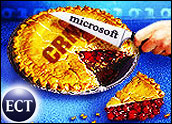
About this time of the year, many manufacturers start believing their markets are saturated. Sales cycles are too quiet in July and August, and everyone from the CFO to the custodial staff get nervous. Too often manufacturers mistake a larger-than-normal dip in a sales cycle for market saturation. On the other hand, there are those companies faced with real market saturation — and their plummeting prices every day just underscore how impervious their markets are to price as their lone remaining differentiator.
It’s not easy to tell the difference between a particularly rough quarter versus true market saturation, but I have take a pass at what is percolating to the top of discussions with manufacturers today. A great response to global saturation is found in Discover Financial Services, a business unit of Morgan Stanley. Their strategies are briefly defined below.
A Tough Quarter or a Saturated Market?
Too many manufacturers are driving blind when it comes to really knowing if their markets are saturated or the sales slump they are in is temporary. Knowing the difference starts by getting the following data:
- Mistaking a sales cycle for solutions training. For complex manufacturers attempting to sell into the mid-tier and low-end of their markets, this is a common problem. Many of these smaller prospects want to learn about what is new and at the same time benchmark whether their internal systems, processes and machinery are measuring up to what’s in the market. Qualifying on the budget available, existing volume of production, and the extent of pain helps get past this.
- A lack of leads does not signal saturation. There is a tendency to start thinking the worst when there are not any leads being generated out of your markets; and when there have not been any leads in months, entire departments start thinking the markets are saturated. A lack of leads does not always equal a saturated market — rather it’s a signal that how your company generates leads needs fixing.
- Over-analyzing the market instead of getting focused on the pipeline. When sales slow down there is a tendency for everyone — from the most senior executives to the most junior sales reps — to over-analyze the problem rather than putting all other non-revenue generating tasks aside and focusing on what needs to be done with the highest priority deals. One manufacturer of ruggedized printers who averages 6 to 8 percent revenue increases per year selling printers for production floor use, found that when they went out to the top 10 accounts in the pipeline with the highest probability of closing, they discovered a new market. Prospects thought their printers might be suitable for printing RFID tags — a secondary use to production floor work yet very convenient from an integration and logistics standpoint — and the manufacturer found a burgeoning new market.
- Percentage of prospects that took action — even without you. This is a telling statistic because it shows the true quality of your leads.
- What is the substitute solution your customers are settling for? If your company thinks its in a saturated market, finding the answer to this question is critical. It may be there is a substitute process, homegrown system or work-around the industry you sell into has found, and that is impacting your sales.
- Have Win-Loss Analysis Completed. The tougher times get for a manufacturer, the more these reports become the barometers of what is working and what isn’t. It is best to have a third party company do this for you to get a measure of impartiality into the results of these surveys.
‘Discover’ How Its Done
Switching gears to an industry that has a classic case of global saturation — credit cards — it is interesting to look at the approach Discover Financial Services chose. Here are highlights from their strategy:
- Refusing to drive up card member counts by going after high-risk subscribers. This is exactly what several card companies did in the midst of the last recession; when spending and interest income fell with their core subscribers, they went after high-risk subscribers in the hope they would bump up revenue per subscriber. This is equivalent of writing bad business; Discover and MBNA didn’t and they emerged stronger from the recession as a result.
- Enhance CashBack Bonus to 2 percent. A classic countercyclical move, Discover increased its CashBack bonus — what it pays back to card holders of qualifying purchases — in the second quarter of 2002 to increase switching costs for its most loyal customers and also to strengthen loyalty with its partner base.
- Focusing on must-haves during the recession pays off. Another countercyclical move, Discover works with the nations’ top grocery chains to offer 10 percent back on grocery bills during the second quarter of 2002.
- Use the Discover/NOVUS Network to penetrate the small and medium issuers. A long-term strategy, Discover Financial Services has been successful in penetrating this market due to its unique advantage of having its own financial network.
Discover Financial Services CEO David Nelms presented at a Morgan Stanley Conference last year detailing plans to combat market saturation. You can find his slides here.
Bottom Line: Going countercyclical to saturation starts with focusing on how to increase the switching cost of your existing customers first, answering the question “what’s in it for me?” from partners, to hang on when markets are declining, and third, questioning your assumptions about your services and product roadmap — as the RFID application of ruggedized printers shows. The best evidence of all of a company surviving saturation is their income statement. Discover Financial Services’ financials are a perfect example.
Louis Columbus, a CRM Buyer columnist, is a former senior analyst with AMR Research. He recently completed the book Getting Results from Your Analyst Relations Strategies, which is available on Amazon.com.














































